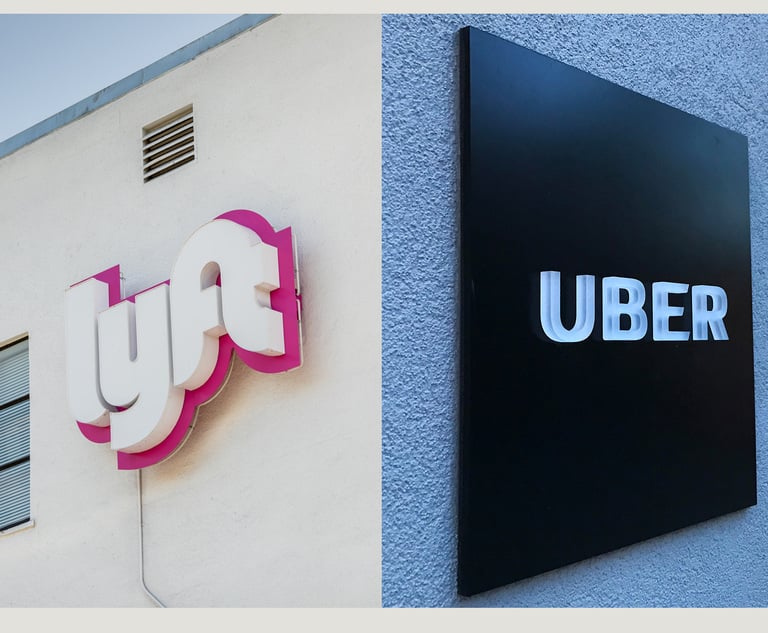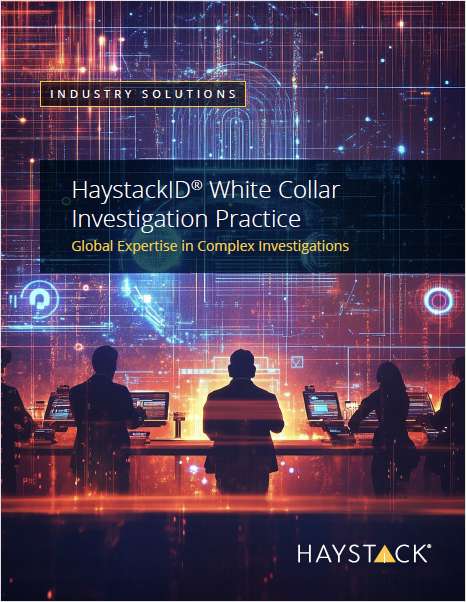Weil and Skadden match Cravath as firms aim for moving target on associate pay
Half a dozen US law firms succumb to pressure to raise associate salaries to new heights
June 14, 2018 at 03:57 PM
4 minute read
The original version of this story was published on The American Lawyer

Weil Gotshal & Manges has confirmed that it will match the salary scale set by Cravath Swaine & Moore earlier this week for its associates, according to an internal firm memo.
The announcement, along with news that Cleary Gottlieb Steen & Hamilton, Kirkland & Ellis, Skadden Arps Slate Meagher & Flom and Willkie Farr & Gallagher are also raising salaries, means at least half a dozen law firms have succumbed to the pressure to raise associate compensation to new heights in just 24 hours.
On Wednesday, as Above the Law first reported, Davis Polk & Wardwell, Paul Weiss Rifkind Wharton & Garrison, Quinn Emanuel Urquhart & Sullivan and Sullivan & Cromwell each matched the pay scale and bonuses set by Cravath earlier this week.
Cravath, in turn, had adopted the initial salary increases set by Milbank Tweed Hadley & McCloy this month for its junior associates, but sweetened pay for its mid-level and senior associates.
RELATED: This Big Law leader decided to match Milbank. Why?
At Weil and the other firms adopting the new-and-improved pay scale, associate base salaries, effective as of 1 July, are as follows:
- Class of 2017 – $190,000
- Class of 2016 – $200,000
- Class of 2015 – $220,000
- Class of 2014 – $255,000
- Class of 2013 – $280,000
- Class of 2012 – $305,000
- Class of 2011 – $325,000
- Class of 2010 – $340,000
New York-based Weil is also implementing special bonuses to its associates, consistent with bonuses announced by Simpson Thacher & Bartlett last week.
"On behalf of all Weil partners, thank you for your continued hard work and dedication," Weil executive partner Barry Wolf said in a memo.
Aiming for the middle?
While these increases might have first-year associates feeling giddy (or jealous), legal experts agree that a key aim of the raises is to recruit and retain mid-level associates.
In the pay scale set by Cravath and matched by all five firms, the biggest jumps in compensation occur in the fourth, fifth and sixth year, noted Dan Binstock, a partner and recruiter at Garrison & Sisson.
"Those tend to be the years in which laterals are most attractive because they have gained the training and experience at another firm and can hit the ground running," said Binstock. "But there's a long runway where firms don't have to worry about making partnership decisions in the immediate future," he added.
Leaps of $35,000 and $25,000 in compensation for mid-level associates show that recruitment and retention are clear priorities, Binstock said.
"This, combined with Weil Gotshal's recent move to reduce the partnership track, has an underlying or more overt signal of this being a real retention play," Binstock said, citing the firm's decision to allow associates to obtain partnership after seven-and-a-half years.
After Milbank announced plans to increase its associate salaries, close to a dozen firms or more have announced they would be matching its scale or better.
But the salary increases have been limited to high-profitability firms, said law firm consultant Brad Hildebrandt.
"Retention and recruiting within the firms that have raised those salaries is pretty intense, because the number of students available to them that would meet the qualifications of those firms is very limited," Hildebrandt said.
He cautioned that most firms in the US are not competing for this same crop of talent, and should tread cautiously when it comes to pressure to announce raises.
"Hopefully sanity will prevail, and there won't be a massive change in associate salaries," Hildebrandt said.
This content has been archived. It is available through our partners, LexisNexis® and Bloomberg Law.
To view this content, please continue to their sites.
Not a Lexis Subscriber?
Subscribe Now
Not a Bloomberg Law Subscriber?
Subscribe Now
NOT FOR REPRINT
© 2024 ALM Global, LLC, All Rights Reserved. Request academic re-use from www.copyright.com. All other uses, submit a request to [email protected]. For more information visit Asset & Logo Licensing.
You Might Like
View All
Not a Shield, but a Weapon? Blue Cross Accused of Antitrust Practices
2 minute read
Uber Not Responsible for Turning Over Information on 'Dangerous Riders' to Competitor, Judge Finds
5 minute read

Ballooning Workloads, Dearth of Advancement Opportunities Prime In-House Attorneys to Pull Exit Hatch
Trending Stories
- 1Commentary: James Madison, Meet Matt Gaetz
- 2The Narcissist’s Dilemma: Balancing Power and Inadequacy in Family Law
- 3Leopard Solutions Launches AI Navigator, a Gen AI Search, Data Extraction Tool
- 4Trump's SEC Likely to Halt 'Off-Channel' Texting Probe That's Led to Billions in Fines
- 5Special Section: Products Liability, Mass Torts & Class Action/Personal Injury
Who Got The Work
Michael G. Bongiorno, Andrew Scott Dulberg and Elizabeth E. Driscoll from Wilmer Cutler Pickering Hale and Dorr have stepped in to represent Symbotic Inc., an A.I.-enabled technology platform that focuses on increasing supply chain efficiency, and other defendants in a pending shareholder derivative lawsuit. The case, filed Oct. 2 in Massachusetts District Court by the Brown Law Firm on behalf of Stephen Austen, accuses certain officers and directors of misleading investors in regard to Symbotic's potential for margin growth by failing to disclose that the company was not equipped to timely deploy its systems or manage expenses through project delays. The case, assigned to U.S. District Judge Nathaniel M. Gorton, is 1:24-cv-12522, Austen v. Cohen et al.
Who Got The Work
Edmund Polubinski and Marie Killmond of Davis Polk & Wardwell have entered appearances for data platform software development company MongoDB and other defendants in a pending shareholder derivative lawsuit. The action, filed Oct. 7 in New York Southern District Court by the Brown Law Firm, accuses the company's directors and/or officers of falsely expressing confidence in the company’s restructuring of its sales incentive plan and downplaying the severity of decreases in its upfront commitments. The case is 1:24-cv-07594, Roy v. Ittycheria et al.
Who Got The Work
Amy O. Bruchs and Kurt F. Ellison of Michael Best & Friedrich have entered appearances for Epic Systems Corp. in a pending employment discrimination lawsuit. The suit was filed Sept. 7 in Wisconsin Western District Court by Levine Eisberner LLC and Siri & Glimstad on behalf of a project manager who claims that he was wrongfully terminated after applying for a religious exemption to the defendant's COVID-19 vaccine mandate. The case, assigned to U.S. Magistrate Judge Anita Marie Boor, is 3:24-cv-00630, Secker, Nathan v. Epic Systems Corporation.
Who Got The Work
David X. Sullivan, Thomas J. Finn and Gregory A. Hall from McCarter & English have entered appearances for Sunrun Installation Services in a pending civil rights lawsuit. The complaint was filed Sept. 4 in Connecticut District Court by attorney Robert M. Berke on behalf of former employee George Edward Steins, who was arrested and charged with employing an unregistered home improvement salesperson. The complaint alleges that had Sunrun informed the Connecticut Department of Consumer Protection that the plaintiff's employment had ended in 2017 and that he no longer held Sunrun's home improvement contractor license, he would not have been hit with charges, which were dismissed in May 2024. The case, assigned to U.S. District Judge Jeffrey A. Meyer, is 3:24-cv-01423, Steins v. Sunrun, Inc. et al.
Who Got The Work
Greenberg Traurig shareholder Joshua L. Raskin has entered an appearance for boohoo.com UK Ltd. in a pending patent infringement lawsuit. The suit, filed Sept. 3 in Texas Eastern District Court by Rozier Hardt McDonough on behalf of Alto Dynamics, asserts five patents related to an online shopping platform. The case, assigned to U.S. District Judge Rodney Gilstrap, is 2:24-cv-00719, Alto Dynamics, LLC v. boohoo.com UK Limited.
Featured Firms
Law Offices of Gary Martin Hays & Associates, P.C.
(470) 294-1674
Law Offices of Mark E. Salomone
(857) 444-6468
Smith & Hassler
(713) 739-1250








